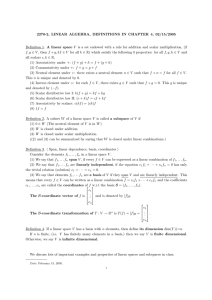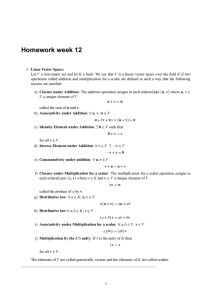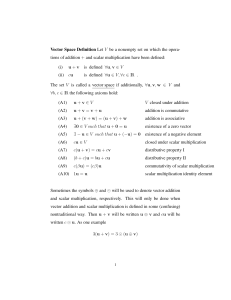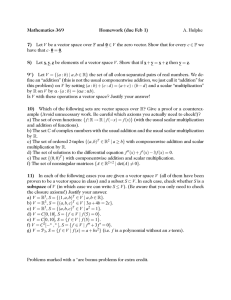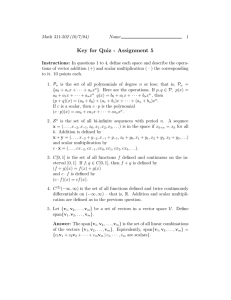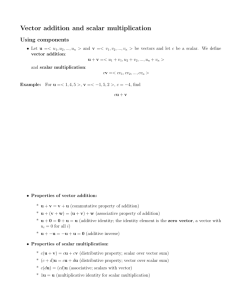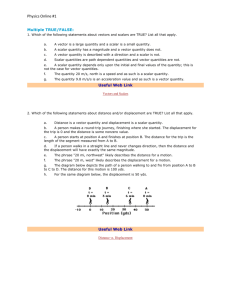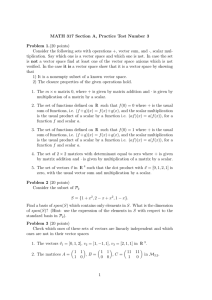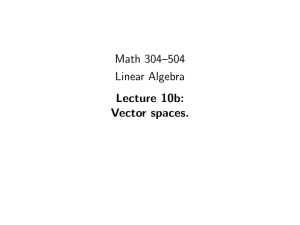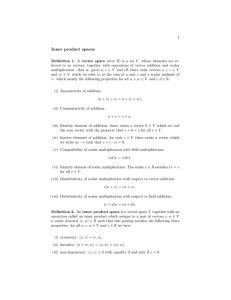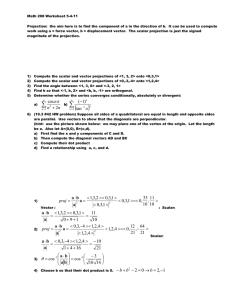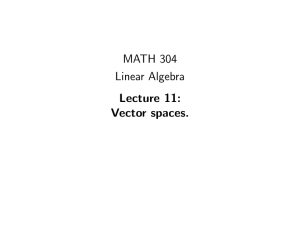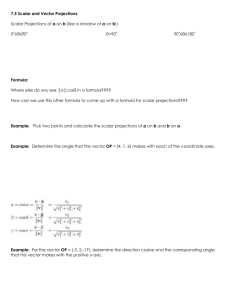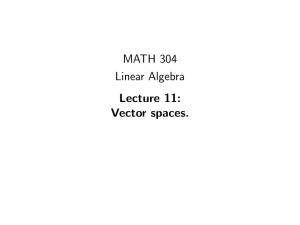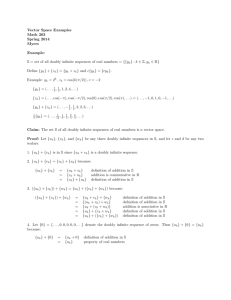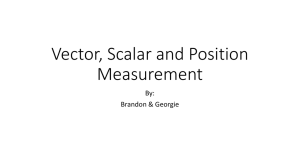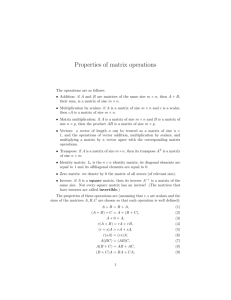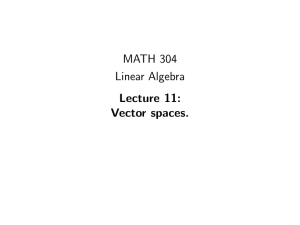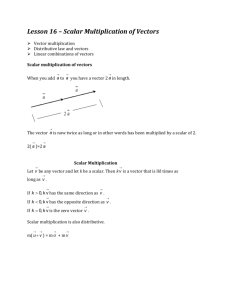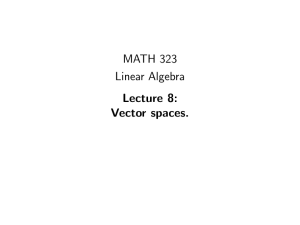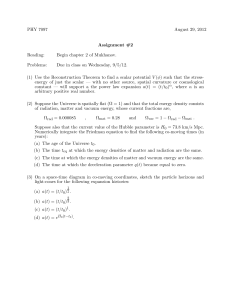3.1: 12 12. Let R + denote the set of positive real numbers. Define
advertisement
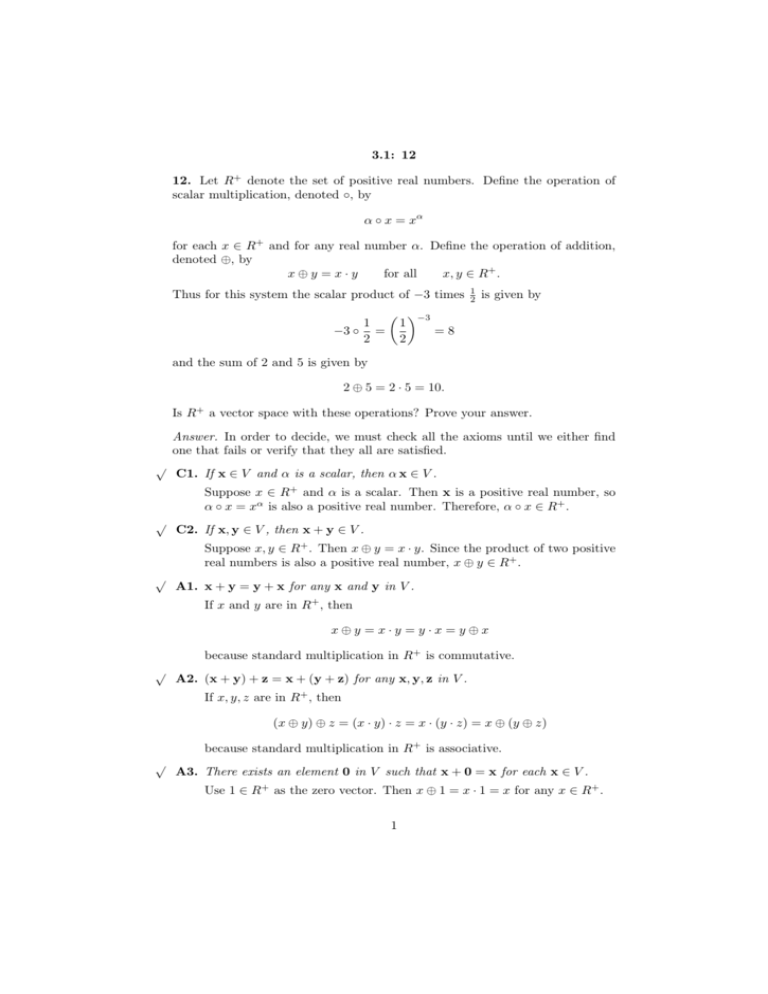
3.1: 12 12. Let R+ denote the set of positive real numbers. Define the operation of scalar multiplication, denoted ◦, by α ◦ x = xα for each x ∈ R+ and for any real number α. Define the operation of addition, denoted ⊕, by x⊕y =x·y for all x, y ∈ R+ . Thus for this system the scalar product of −3 times −3 ◦ 1 = 2 1 2 is given by −3 1 =8 2 and the sum of 2 and 5 is given by 2 ⊕ 5 = 2 · 5 = 10. Is R+ a vector space with these operations? Prove your answer. Answer. In order to decide, we must check all the axioms until we either find one that fails or verify that they all are satisfied. √ C1. If x ∈ V and α is a scalar, then α x ∈ V . Suppose x ∈ R+ and α is a scalar. Then x is a positive real number, so α ◦ x = xα is also a positive real number. Therefore, α ◦ x ∈ R+ . √ C2. If x, y ∈ V , then x + y ∈ V . Suppose x, y ∈ R+ . Then x ⊕ y = x · y. Since the product of two positive real numbers is also a positive real number, x ⊕ y ∈ R+ . √ A1. x + y = y + x for any x and y in V . If x and y are in R+ , then x⊕y =x·y =y·x=y⊕x because standard multiplication in R+ is commutative. √ A2. (x + y) + z = x + (y + z) for any x, y, z in V . If x, y, z are in R+ , then (x ⊕ y) ⊕ z = (x · y) · z = x · (y · z) = x ⊕ (y ⊕ z) because standard multiplication in R+ is associative. √ A3. There exists an element 0 in V such that x + 0 = x for each x ∈ V . Use 1 ∈ R+ as the zero vector. Then x ⊕ 1 = x · 1 = x for any x ∈ R+ . 1 √ A4. For each x ∈ V , there exists an element −x in V such that x + (−x) = 0. For each x ∈ R+ , use 1/x as the negative. Then x ⊕ (1/x) = x · (1/x) = 1, which is our zero vector. Thus we have a negative for each vector in R+ . √ A5. α (x + y) = αx + αy for each scalar α and any x and y in V . If α is a scalar and x, y ∈ R+ , then α ◦ (x ⊕ y) = (x · y)α = xα · y α = (α ◦ x) ⊕ (α ◦ y). √ A6. (α + β)x = αx + βx for any scalars α and β and any x ∈ V . If α and β are scalars and x ∈ R+ , then (α ◦ x) ⊕ (α ◦ x) = xα · xβ = xα+β = (α + β) ◦ x. √ A7. (αβ)x = α(βx) for any scalars α and β and any x ∈ V . If α and β are scalars and x ∈ R+ , then α ◦ (β ◦ x) = (xβ )α = xβα = xαβ = (αβ) ◦ x √ A8. 1 · x = x for all x ∈ V . If x ∈ R+ , then 1 ◦ x = x1 = x. We have now verified that all the axioms are satisfied. Therefore, R+ is a vector space with these operations. 2
